Dillard University
Introduction
Text-to-speech Audio
Dillard University is a private, historically Black liberal arts college in New Orleans, Louisiana, United States. Founded in 1930 incorporating earlier institutions that went back to 1869, it is affiliated with the United Church of Christ and the United Methodist Church. Dillard University as we know it today was established in the 1930s and has continued strong today.
Images
Undated photo of what was most likely the main building of what was Straight University.
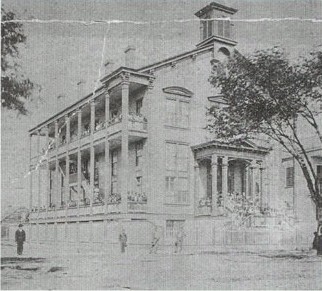
Circa 1920s photo of New Orleans College
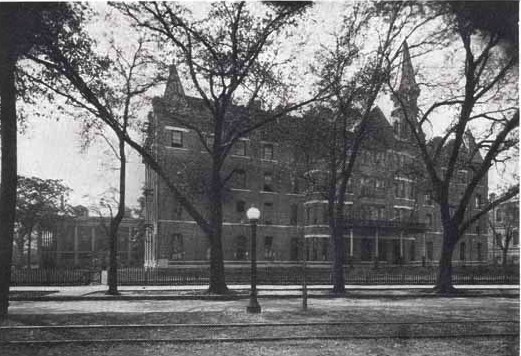
Circa 1930s photo of Dillard University
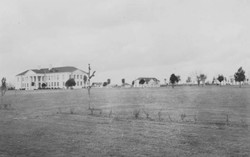
Dillard's seal and motto
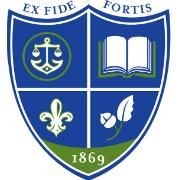
Photo of the class of 1885, when Dillard was either Union Normal School or Straight University
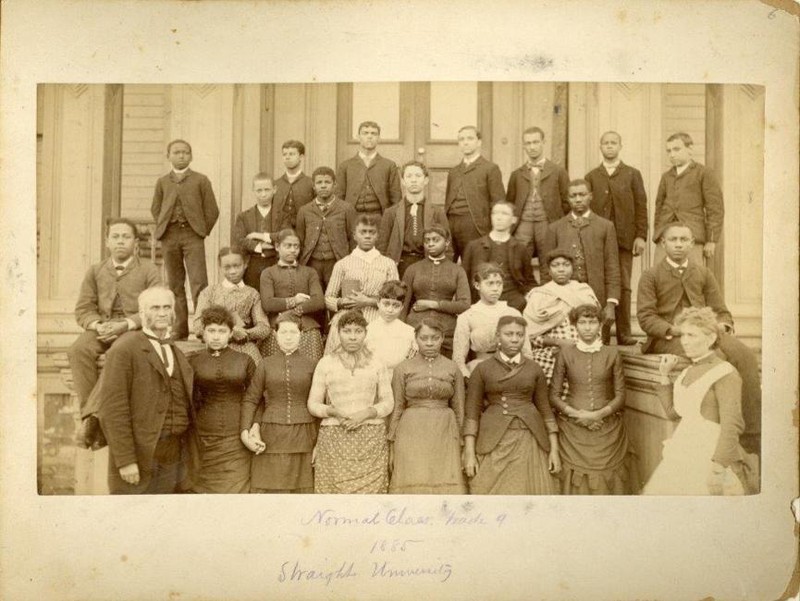
Dillard campus as seen from Gentilly Blvd.
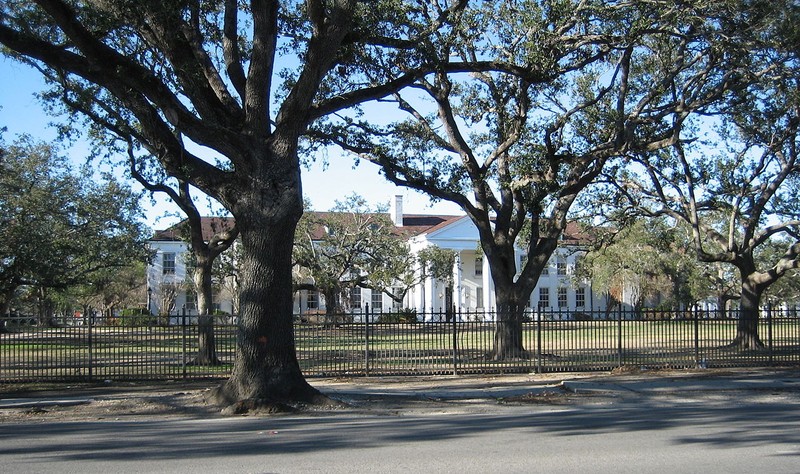
James H. Dillard, the university's namesake, in 1932
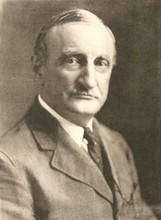
Backstory and Context
Text-to-speech Audio
The history of Dillard University dates back to 1869 and its founding predecessor institutions--Straight University (later to be renamed Straight College) and Union Normal School (which was to become New Orleans University). Responding to the post-Civil War need to educate newly freed African Americans in New Orleans, Louisiana and the surrounding region, the American Missionary Association of the Congregational Church founded Straight University on June 12, 1868. Straight University also offered professional training, including a law department from 1874 to 1886, and its graduates participated in local and national Reconstruction and post-Reconstruction era civil rights struggles. Straight University was renamed Straight College in 1915.
The Union Normal School was established by the Freedman's Aid Society of the Methodist Episcopal Church on July 8, also in 1868. In addition to Straight University, the AMA helped found several other historically Black colleges and universities, such as Clark Atlanta University, Fisk University, Hampton University, Howard University (with Freedmen's Bureau), Huston-Tillotson University, LeMoyne-Owen College, Talladega College, and Tougaloo College. Straight University and Union Normal School later became Straight College and New Orleans University, respectively. Both schools offered elementary level education, but quickly enlarged curriculum to include secondary, collegiate, and professional level instruction.
The Union Normal School was established by the Freedman's Aid Society of the Methodist Episcopal Church on July 8, also in 1868. In addition to Straight University, the AMA helped found several other historically Black colleges and universities, such as Clark Atlanta University, Fisk University, Hampton University, Howard University (with Freedmen's Bureau), Huston-Tillotson University, LeMoyne-Owen College, Talladega College, and Tougaloo College. Straight University and Union Normal School later became Straight College and New Orleans University, respectively. Both schools offered elementary level education, but quickly enlarged curriculum to include secondary, collegiate, and professional level instruction.
New Orleans University operated a secondary school--Gilbert Academy. By the 1890s, the university offered professional medical training. It included a school of pharmacy, the Flint Medical College, and the Sarah Goodridge Hospital and Nurse Training School. After the medical college was ended in 1911, the Flint Goodridge Hospital emerged and continued nurse training. Local Black and White leaders felt there was a need for a larger, more notable African American institution of higher learning to emerge within New Orleans and the greater South. Due to economic hardships and rounds of negotiations between the two institutions, Straight College and New Orleans University chartered Dillard University on June 6, 1930. Named after James H. Dillard the new university was created to "... offer a traditional liberal arts curriculum—rather than nonprofessional, vocational training" and emphasize a close engagement with the Black community through "various education extension programs, societies, and clubs."1
Despite the hope of this new charter, the building of Dillard University was tempered by its context of Jim Crow America. Many local Whites took concern with the possibility of a Black president presiding over White faculty members. Similarly, the increased numbers of African American bus riders in the Gentilly area disturbed some White sensibilities. As an influential and diplomatic member of Dillard's board of trustees, Edgar B. Stern Sr suggested Will W. Alexander as a suitable compromise. Will W. Alexander, a white Southern preacher, was Dillard's first acting president (1935–1936), whose experience as the director of the Commission on Interracial Cooperation proved valuable. Dillard University opened its doors in the fall of 1935, and was able to attract a number of prominent scholars, such as Horace Mann Bond, psychology and education; Frederick Douglass Hall, music; Lawrence D. Reddick, history; and St. Clair Drake, sociology and anthropology.
In August 2005, the campus, not far from the lower levee breach of the London Avenue Canal, suffered extensive flood damage in the aftermath of Hurricane Katrina. Nelson Hall was destroyed by a fire. A bus fire also destroyed belongings of 37 students who were in the process of being evacuated. In spring 2006, the students of Dillard University took their normal classes at The New Orleans World Trade Center and The New Orleans Hilton Riverside Hotel. As is tradition, Dillard held graduation on the Rosa Freeman Keller Avenue of the Oaks in July 2006. Students returned to campus in September 2006.
In 2003, musician Ray Charles added a provision in his will to endow a $1 million professorship of African-American culinary history at Dillard. It is the first such position in the country.
The campus has the following buildings on its grounds:
In 2003, musician Ray Charles added a provision in his will to endow a $1 million professorship of African-American culinary history at Dillard. It is the first such position in the country.
The campus has the following buildings on its grounds:
Academic buildings
DUICEF (Dillard University International Center for Economic Freedom) was dedicated in 2004. It houses the offices of the Division of Education & Psychology and the Division of Social Sciences, and computer and language laboratories.
Howard House, built in 1936, was originally a guest house, but currently is home to the business program. The building was named in honor of New Orleans native Alvin Pike Howard (1889–1937), successful businessman, former professor of Tulane University and former director of Hibernia National Bank; he is a noteworthy contributor to the development of Dillard University.
The Professional Schools Building is the newest academic building on campus. It was dedicated in 2010. The building is home to academic and research programs for the College of Business, School of Nursing, School of Public Health, and the Department of Science, Technology, Engineering and Mathematics.
Rosenwald Hall is a hall at Dillard University. Dillard's first permanent building was originally the campus library. It was built in May 1934. The building is named in honor of philanthropist Julius Rosenwald, to whom the building was dedicated in June 1948. This building houses the university's administrative offices and was under construction due to damage in the aftermath of Hurricane Katrina. It was back in operation in the fall of 2008.
Samuel DuBois Cook Fine Arts and Communications Center at Dillard University, New Orleans, was built in 1993. The building is named in honor of Dillard University's sixth president, Dr. Samuel DuBois Cook. With his tenure came the start of the modernization of Dillard University's infrastructure. In the building are the Fine Arts Gallery and studios, state-of-the-art television and recording studios, the Music Department, the Drama Department and a theater, and a radio station.
Stern Hall is a hall at Dillard University. Dillard's science building was built in 1952. It is named in honor of Edgar Bloom Stern, a prominent financier and philanthropist of New Orleans. The building was renovated in 1952 and again in 1968. In the building are the Division of Nursing, Division of Natural Sciences, two computer labs, Biology, Chemistry and Physics labs as well as a learning center sponsored by the Louisiana Alliance for Minority Participation (LAMP) program.
Library
Will W. Alexander Library is Dillard University's library. It was built in 1961. The library was dedicated in honor of the first acting president of Dillard University, the Rev. Will W. Alexander on October 22, 1961. The library houses an extensive collection of books, journals, microform and newspapers, as well as such historical documents as the papers of the American Missionary Association of the United Church of Christ. The library was damaged in the aftermath of Hurricane Katrina and reopened as a state-of-the-art facility in April 2008.
Chapel
Lawless Memorial Chapel is Dillard University's chapel. It was built in 1955. Chapel was dedicated to the memory of Dr. Alfred Lawless Jr. and his son Theodore K. Lawless M.D. on October 23, 1955. Now named Lawless Assembly Hall, it is the only building on Dillard's campus that did not suffer flood damage in the aftermath of Hurricane Katrina.
On-campus housing
Camphor Hall is a hall at Dillard University, New Orleans. It was built in 1947. This female dormitory was originally a male dormitory. The building was named in honor of a Louisiana native, educator and missionary, Bishop Alexander Priestly Camphor.
Hartzell Hall is a dormitory at Dillard University. It was built in 1935. Hartzell is named in honor of Joseph Crane Hartzell, a missionary bishop for the Methodist Episcopal Church. The building was originally a junior and senior female dormitory, and re-opened in the fall of 2013.
Nelson Complex consisted of three modular buildings that served as undergraduate housing for students. Named after William Nelson, the first African American president of the university, it was destroyed by fire during Hurricane Katrina.
Straight Hall is a dormitory at Dillard University. It was built in 1936 and renovated in 1957, Straight Hall was originally a female dormitory in its earliest days. The building is named in honor of Seymour Straight, president of the Board of Trustees of Straight College, which opened in 1869 and later in 1930 merged with New Orleans University to form Dillard University. Re-opened in the spring of 2013.
Williams Hall is a female dormitory building located to the left of Kearny hall. It was dedicated in honor of noted New Orleanian educator and philanthropist Fannie C. Williams (1882–1980) in June 1946. The building was renovated in 2000 and became a co-ed dormitory in 2014.
Athletic buildings
Dent Hall at Dillard University, New Orleans, is the university's gymnasium. It was named in honor of Dr. Albert W. Dent, the university's third president. It was built in 1969 at the end of his service. Dent Hall is the home of the Bleu Devils and the Lady Bleu Devils basketball teams (Athletics Department). In this building are The Division of Campus Life, Career Services, Student Development, Student Government Association, the Daniel C. Thompson/Samuel Dubois Cook Honors Program, offices, classrooms, computer labs, a dance studio, a weight center and a newly renovated swimming pool.
Henson Hall is Dillard University's old gymnasium, which was built in 1950 and renovated in 1990. The building is named in honor of an explorer and co-discoverer of the North Pole, Matthew Alexander Henson. He was the first human of African descent to reach the North Pole. The university's bookstore and temporary library are housed in Henson Hall due to space constraints following Hurricane Katrina.
Student center
Kearny Hall is the student center at Dillard University. It was built in 1935 and renovated in 1966 and 1996. This building is named in honor of New Orleanian Warren Kearny, Trustee of Dillard University. Kearny Hall is located at the center of the campus. In the building are a lounge area, post office, cafeteria, food service offices, as well as the Student Government Association office.
President's house
Built in 1936, the president's residence has been renovated three times: 1964, 1972 and 1997. It has been home to six of the seven presidents of Dillard University. It now serves as the Alumni House.
Sources
1.Bernard, Louise and Radiclani Clytus. Within These Walls: A Short History of Dillard University. New Orleans: Dillard University, 1999. 11
Bernard, Louise and Radiclani Clytus. Within These Walls: A Short History of Dillard University. New Orleans: Dillard University, 1999.
Read, Mimi (February 23, 2005). "A Gift to Black Cuisine, From Ray Charles". New York Times.
Castelow, Teri L. "Dillard, J. H. (1856–1940)". Encyclopedia Virginia.
"James Hardy Dillard". The Journal of Negro History. Association for the Study of African American Life and History, Inc. XXIV (4): 585. October 1940. JSTOR 2715156
"J. H. Dillard: End of an Epoch". The Pittsburgh Courier. August 17, 1940.
Bernard, Louise and Radiclani Clytus. Within These Walls: A Short History of Dillard University. New Orleans: Dillard University, 1999.
Read, Mimi (February 23, 2005). "A Gift to Black Cuisine, From Ray Charles". New York Times.
Castelow, Teri L. "Dillard, J. H. (1856–1940)". Encyclopedia Virginia.
"James Hardy Dillard". The Journal of Negro History. Association for the Study of African American Life and History, Inc. XXIV (4): 585. October 1940. JSTOR 2715156
"J. H. Dillard: End of an Epoch". The Pittsburgh Courier. August 17, 1940.
